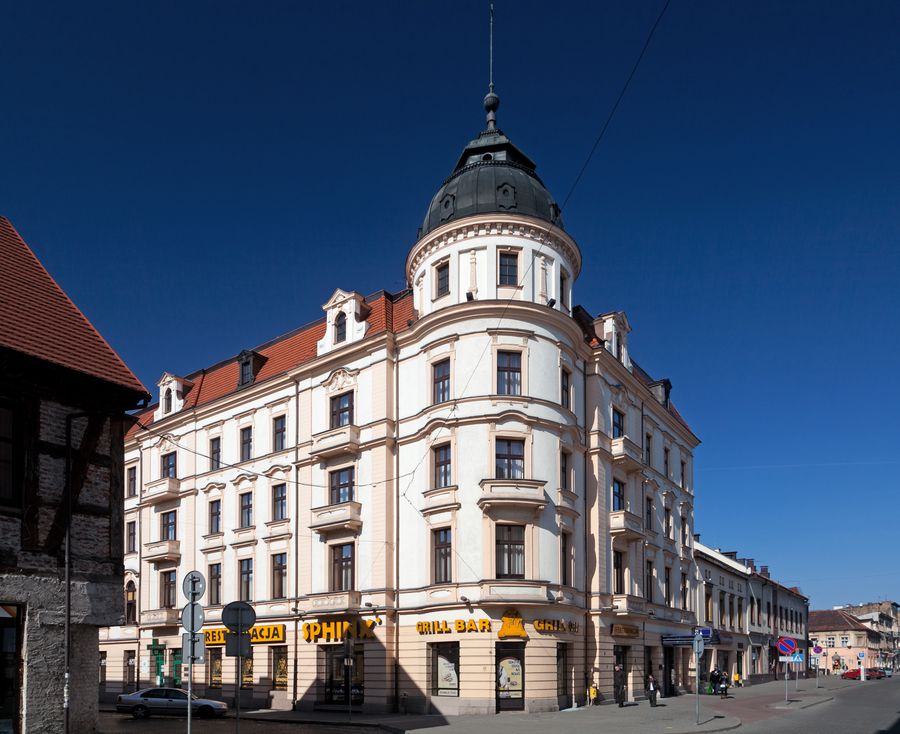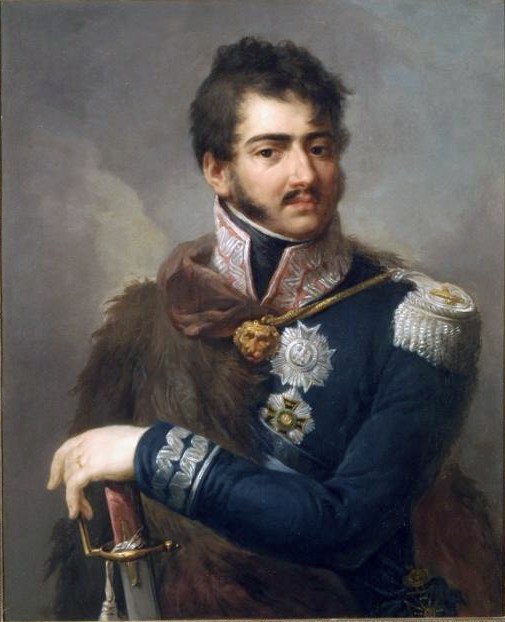|
Więcbork
Więcbork (; german: Vandsburg) is a town in northern Poland, located in the Sępólno County in the Kuyavian-Pomeranian Voivodeship. In 2019 it had a population of 5,965. It is located within the ethnocultural region of Krajna. History After 960 the town was part of Piast Poland under Mieszko I. It is first mentioned under the name ''Wanszowna'' in historical records in the chronicle of Jan of Czarnków in 1383. The first record instance of the name Więcbork occurred in 1405. The town was part of the Kingdom of Poland and it was a private town, which belonged to various Polish magnates. Administratively it was located in the Nakło County in the Kalisz Voivodeship in the Greater Poland Province of the Polish Crown. After the First Partition of Poland in 1772 the town became part of Kingdom of Prussia, under the name ''Vandsburg''. In 1807 Więcbork was regained by Poles and included within the short-lived Duchy of Warsaw and in 1815 it was reannexed by Prussia, where it was ... [...More Info...] [...Related Items...] OR: [Wikipedia] [Google] [Baidu] |
Gmina Więcbork
__NOTOC__ Gmina Więcbork is an urban-rural gmina (administrative district) in Sępólno County, Kuyavian-Pomeranian Voivodeship, in north-central Poland. Its seat is the town of Więcbork, which lies approximately south of Sępólno Krajeńskie and north-west of Bydgoszcz. The gmina covers an area of , and as of 2006 its total population is 13,028 (out of which the population of Więcbork amounts to 5,788, and the population of the rural part of the gmina is 7,240). The gmina contains part of the protected area called Krajna Landscape Park. Villages Apart from the town of Więcbork, Gmina Więcbork contains the villages and settlements of Adamowo, Borzyszkowo, Czarmuń, Dąbie, Dalkowo, Dorotowo, Dwanaście Apostołów, Frydrychowo, Górowatki, Jastrzębiec, Jeleń, Karolewo, Katarzyniec, Klarynowo, Lubcza, Młynki, Nowy Dwór, Pęperzyn, Puszcza, Runowo Krajeńskie, Runowo-Młyn, Śmiłowo, Suchorączek, Sypniewo, Werski Most, Wilcze Jary, Witunia, ... [...More Info...] [...Related Items...] OR: [Wikipedia] [Google] [Baidu] |
Sępólno County
__NOTOC__ Sępólno County ( pl, powiat sępoleński) is a unit of territorial administration and local government (powiat) in Kuyavian-Pomeranian Voivodeship, north-central Poland. It came into being on January 1, 1999, as a result of the Polish local government reforms passed in 1998. Its administrative seat and largest town is Sępólno Krajeńskie, which lies north-west of Bydgoszcz and north-west of Toruń. The county also contains the towns of Więcbork, lying south of Sępólno Krajeńskie, and Kamień Krajeński, north of Sępólno Krajeńskie. The county covers an area of . As of 2019 its total population is 41,055, out of which the population of Sępólno Krajeńskie is 9,091, that of Więcbork is 5,950, that of Kamień Krajeński is 2,390, and the rural population is 23,624. Neighbouring counties Sępólno County is bordered by Człuchów County and Chojnice County to the north, Tuchola County to the north-east, Bydgoszcz County to the south-east, Nakło County to ... [...More Info...] [...Related Items...] OR: [Wikipedia] [Google] [Baidu] |
Krajna
Krajna is a forested historical region in Poland, situated in the border area between the Greater Poland, Kuyavian-Pomeranian and Pomeranian Voivodeships. The region consists of parts of Złotów, Piła, Sępólno, Nakło, Bydgoszcz and Człuchów counties, namely the urban gmina of Złotów, the rural gmina of Złotów and the urban-rural gminas of Krajenka, Wysoka, Wyrzysk, Łobżenica, Kamień Krajeński, Sępólno Krajeńskie, Więcbork, Nakło nad Notecią, Koronowo and Debzno. The name of Krajna is derived from the Slavic word for borderland (between Greater Poland and Pomerania), cf. Krajina. The main towns in the region are Złotów and Nakło nad Notecią. Since 1932, Krajna has own regional anthem, composed by Paweł "Krajnomir" Jasiek [...More Info...] [...Related Items...] OR: [Wikipedia] [Google] [Baidu] |
Kuyavian-Pomeranian Voivodeship
Kuyavian-Pomeranian Voivodeship, also known as Cuiavian-Pomeranian Voivodeship or simply Kujawsko-Pomorskie, or Kujawy-Pomerania Province ( pl, województwo kujawsko-pomorskie ) is one of the 16 voivodeships (provinces) into which Poland is divided. It was created on 1 January 1999 and is situated in mid-northern Poland, on the boundary between the two historic regions from which it takes its name: Kuyavia ( pl, Kujawy) and Pomerania ( pl, Pomorze). Its two chief cities, serving as the province's joint capitals, are Bydgoszcz and Toruń. History The Kuyavian-Pomeranian Voivodeship was created on 1 January 1999, as a result of the Polish local government reforms adopted in 1998. It consisted of territory from the former Bydgoszcz, Toruń and Włocławek Voivodeships. The area now known as Kuyavia-Pomerania was previously divided between the region of Kuyavia and the Polish fiefdom of Royal Prussia. Of the two principal cities of today's Kuyavian-Pomeranian voivodeship, one ( Byd ... [...More Info...] [...Related Items...] OR: [Wikipedia] [Google] [Baidu] |
Sępólno Krajeńskie
Sępólno Krajeńskie (german: Zempelburg) is a town in northern Poland, in the Kuyavian-Pomeranian Voivodeship. It is the capital of Sępólno County (P''owiat Sępoleński'') and Gmina Sępólno Krajeńskie. Zempelburg was part of Greater Poland until 1772. From 1772 to 1807, it belonged to Prussia. From 1807 to 1815, it was part of the Duchy of Warsaw. The city was recaptured by Prussia and became part of West Prussia from 1815 to 1920. In 2016, it had a total population of 15,907 with an urban population of 9,258 and rural population of 6,649. Location The city is located in the historical Krajna forest on a high bank of the Sępólna River. It is located 63 km northwest of Bydgoszcz (Bromberg). History The town formed part of the Kalisz Voivodeship of the Greater Poland Province of the Polish Crown from 1314-1793. The town received Magdeburg rights in 1360 from King Casimir the Great of Poland. The Catholic church, mentioned as early as 1360, suggests that it ... [...More Info...] [...Related Items...] OR: [Wikipedia] [Google] [Baidu] |
Kamień Krajeński
Kamień Krajeński (; ''Kamień Pomorski'' between 1920–1945; german: Kamin in Westpreußen) is a town in Sępólno County, Kuyavian-Pomeranian Voivodeship in northern Poland, with 2,276 inhabitants (2004). It is located within the ethnocultural region of Krajna. History The first historical record of Kamień comes from 1107. Its name means "stone" in Polish. It was a seat of a castellany during the reign of Bolesław III Wrymouth of Poland. In the thirteenth century it belonged to the Archbishop of Gniezno. It was briefly occupied by the Teutonic Knights in 1339 before reverting to Poland. In 1359 it received municipal rights from Archbishop Jarosław. Shortly after a defensive castle was built which survived until 1721. Administratively it was located in the Nakło County in the Kalisz Voivodeship in the Greater Poland Province of the Polish Crown. After the First Partition of Poland in 1772, Kamień was annexed by the Kingdom of Prussia, and under the Germanized name ''Kam ... [...More Info...] [...Related Items...] OR: [Wikipedia] [Google] [Baidu] |
Kingdom Of Prussia
The Kingdom of Prussia (german: Königreich Preußen, ) was a German kingdom that constituted the state of Prussia between 1701 and 1918.Marriott, J. A. R., and Charles Grant Robertson. ''The Evolution of Prussia, the Making of an Empire''. Rev. ed. Oxford: Clarendon Press, 1946. It was the driving force behind the unification of Germany in 1871 and was the leading state of the German Empire until its dissolution in 1918. Although it took its name from the region called Prussia, it was based in the Margraviate of Brandenburg. Its capital was Berlin. The kings of Prussia were from the House of Hohenzollern. Brandenburg-Prussia, predecessor of the kingdom, became a military power under Frederick William, Elector of Brandenburg, known as "The Great Elector". As a kingdom, Prussia continued its rise to power, especially during the reign of Frederick II, more commonly known as Frederick the Great, who was the third son of Frederick William I.Horn, D. B. "The Youth of Frederick ... [...More Info...] [...Related Items...] OR: [Wikipedia] [Google] [Baidu] |
Polish People
Poles,, ; singular masculine: ''Polak'', singular feminine: ''Polka'' or Polish people, are a West Slavic nation and ethnic group, who share a common history, culture, the Polish language and are identified with the country of Poland in Central Europe. The preamble to the Constitution of the Republic of Poland defines the Polish nation as comprising all the citizens of Poland, regardless of heritage or ethnicity. The majority of Poles adhere to Roman Catholicism. The population of self-declared Poles in Poland is estimated at 37,394,000 out of an overall population of 38,512,000 (based on the 2011 census), of whom 36,522,000 declared Polish alone. A wide-ranging Polish diaspora (the '' Polonia'') exists throughout Europe, the Americas, and in Australasia. Today, the largest urban concentrations of Poles are within the Warsaw and Silesian metropolitan areas. Ethnic Poles are considered to be the descendants of the ancient West Slavic Lechites and other tribes that inhabite ... [...More Info...] [...Related Items...] OR: [Wikipedia] [Google] [Baidu] |
Duchy Of Warsaw
The Duchy of Warsaw ( pl, Księstwo Warszawskie, french: Duché de Varsovie, german: Herzogtum Warschau), also known as the Grand Duchy of Warsaw and Napoleonic Poland, was a French client state established by Napoleon Bonaparte in 1807, during the Napoleonic Wars. It comprised the ethnically Polish lands ceded to France by Prussia under the terms of the Treaties of Tilsit. It was the first attempt to re-establish Poland as a sovereign state after the 18th-century partitions and covered the central and southeastern parts of present-day Poland. The duchy was held in personal union by Napoleon's ally, Frederick Augustus I of Saxony, who became the Grand Duke of Warsaw and remained a legitimate candidate for the Polish throne. Following Napoleon's failed invasion of Russia, the duchy was occupied by Prussian and Russian troops until 1815, when it was formally divided between the two countries at the Congress of Vienna. The east-central territory of the duchy acquired by the Russia ... [...More Info...] [...Related Items...] OR: [Wikipedia] [Google] [Baidu] |
List Of Sovereign States
The following is a list providing an overview of sovereign states around the world with information on their status and recognition of their sovereignty. The 206 listed states can be divided into three categories based on membership within the United Nations System: 193 UN member states, 2 UN General Assembly non-member observer states, and 11 other states. The ''sovereignty dispute'' column indicates states having undisputed sovereignty (188 states, of which there are 187 UN member states and 1 UN General Assembly non-member observer state), states having disputed sovereignty (16 states, of which there are 6 UN member states, 1 UN General Assembly non-member observer state, and 9 de facto states), and states having a special political status (2 states, both in free association with New Zealand). Compiling a list such as this can be a complicated and controversial process, as there is no definition that is binding on all the members of the community of nations concerni ... [...More Info...] [...Related Items...] OR: [Wikipedia] [Google] [Baidu] |
Kalisz Voivodeship (1314–1793)
Kalisz Voivodeship 1314–1793 (Polish: ''Województwo Kaliskie'', Latin: ''Palatinatus Calisiensis'') was an administrative unit of Poland from 1314 to the Second Partition of Poland in 1793. It was part of the Greater Polish ''Province''. Its capital was in Kalisz, and together with neighboring Poznań Voivodeship, Kalisz elected general starosta of Greater Poland. The sejmiks for the two voivodeships took place at Środa Wielkopolska, while general sejmik for the whole Province of Greater Poland took place in Koło, at the Bernardine Abbey. The territory of the voivodeship remained unchanged from 1314 until 1768, when Gniezno Voivodeship was carved out of its northern three counties. Its original area was 15,320 km2., but after 1768 it shrank to 7,810 km2. Local starostas resided at Kalisz, Gniezno, Konin, Kcynia, Naklo, Pyzdry, and Złotów. Kalisz Voivodeship had eight senators. These were: Archbishop of Gniezno, Voivode of Kalisz (who resided at the Kalisz Royal ... [...More Info...] [...Related Items...] OR: [Wikipedia] [Google] [Baidu] |




